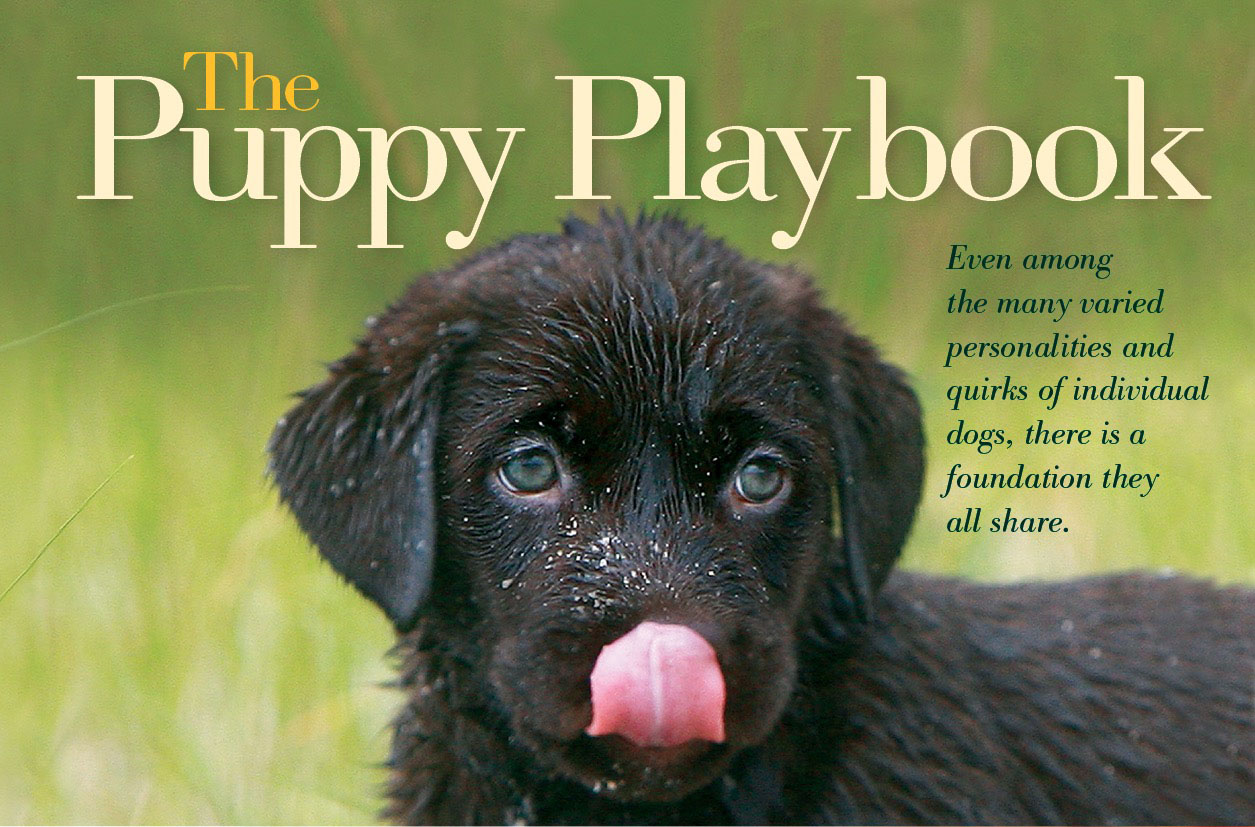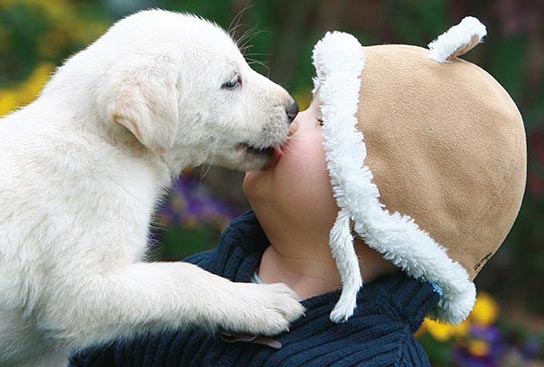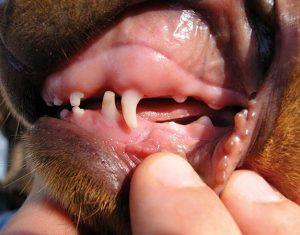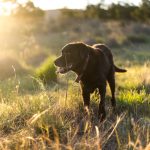It’s a common theme in every dog training book – and, indeed, in many of this magazine’s articles, including my Editorial in the issue, – that each dog is an individual, that you can’t fit the dog to your specific training method, that you must adapt your methods to suit the individuality of the dog. While that is true, much of this individuality comes out a bit later in a dog’s life; in many ways, it refers more to their personality. But even among the many varied personalities and quirks of individual dogs, there is a foundation they all share.
Making sure that foundation is solid and enjoyable will foster opportunities for the pup to develop and express that personality. Our old Josie was a hard-charging pup right out of the gate, and it didn’t take long to see that I had a pretty driven duck dog on my hands. Ginny, on the other hand, not yet two years old, likes to stop and smell the roses on her fetches, at least right now. But I managed the health and safety for both of them the same way; I housebroke both of them the same way; we started our early puppy drills the same way.
You can’t know what your pup will be like when she’s seven years old and in her prime. You can’t know if the pup who is obsessive about a tennis ball will eventually feel the same way about a duck. You can’t know if the pup who acts goofy and silly will eventually find her calm center and be a glorified rug around the house. But you can establish that foundation by which the pup – and you – will learn those very things.
For this article, I’ll be talking about pups in that seven-to 16 week range – essentially, from when you bring her home to about four months old. And, of course, by no means is this an exhaustive list.
Behavior: Housetraining
Ah, the bane of puppyhood. The thing we remember – and savor – the most when a pup gets it early, and the thing that, when there are problems, makes us seriously consider getting an older dog next time. It is perhaps the most aggravating phase of puppyhood.
Learning to go outside is only partly a dog thing – it’s more a person thing, with consistency being the key. It is about recognizing the signs a pup has to go, and hustling them out to a particular spot in the yard… and, the hard part, staying out there until either the pup goes or at least makes an honest effort. When training Ginny, she developed the wonderful habit of making potty breaks playtime – she thought that was why we were going out. I combatted this by putting her on a leash and remaining still while she bounced around me trying to get me to play.
Bonus Behavior: Learning Name
This will take a while. You may think that it’s a definite ear-perk you see when you call the name of your new pup, but most likely she’s reacting to your voice and pitch changes. Try not to use your pup’s name in place of a command. I believe people most often expect the dog to come to them when they say the name. But, “Ginny” is not a command. It can mean any number of things depending on how my teeth are clenched, if she’s in the process of sneaking the plate of hamburgers off the counter, or if I’m trying to wake her to get her outside one more time before bed. With pups, use the name often, but at most, only expect your dog’s attention with her name, not that she execute a specific command.
You know the times your dog has an accident. Anticipate those, and scoop the pup up. Remember, she won’t know what the word “outside” means for a while. You’ll need to say it all the time, but you can’t get frustrated when she doesn’t respond.
There are lots of indoor mats on the market these days that tout themselves as making housetraining a snap. While I’ve never tried them, aside from apartment dwellers, I have a hard time seeing the benefit. It seems to me that if you want to train your dog to relieve herself in a certain spot, just start from the beginning and take her to that spot. Outside.
Like any training – whether it’s behavioral or for specific commands – it will take as long as it will take. Some pups will pick it up in a snap. Others will take a few months. It can be tied to the normal growth and development of the pup, but you also shouldn’t ignore an unusual number of accidents, either, as puppies are prone to bladder infections.
What do you do when you find a mess? If after the fact, clean it up. The pup’s mind has already moved on to her next round of mischief. If caught in the act, you need to walk a fine line between how much to let go and chalk up to your own failure to get her out in time, and how much to communicate your displeasure. Labs are smart, for the most part. But at this age, they are also fragile. Very early on, just pick the dog up. When it gets to the point where she’s having some success – asking to go out sometimes, ignoring you and peeing in the house the other times – I try to keep it to one word (“No!”) with a follow up of the proper action. This will lay a foundation for how all training will go if the dog disobeys a known command.
Behavior: Biting and Chewing
Pups – and Labs especially – are mouthy. In addition to toys and food and treats – you know, the things they should have in their mouths – will be shoes, drapes, kitchen cabinets, and fingers.
Play biting is common in pups. They were just playing with their littermates in the whelping box the same way and now, well, there are some brand new funny-looking littermates to get to know. Don’t squeeze and swat the muzzle of a pup for biting. Shrieking, “Ow!” and turning away, ending the game, is a better tool to try to shape the behavior of not biting. Biting that is more aggressive and not done in a play setting warrants a talk with a breeder and an examination of the guarantee that came with the pup.
Chewing is, sadly, one of those things that many Labs never outgrow. While left alone outside for a little fresh air – yet still under our observation from the nearby window – Ginny found it interesting to sample a little bit of the suet hung low on a tree for the birds. (And I’ve relayed her many exploits with countersurfing. And the $300 in cash she “recycled” out the other end.)
Diverting puppy chewing to acceptable items is a fix, but only for some. Vigilance on your part is most often the only cure. For those dogs on the more extreme end of chewing, even acceptable chew toys should not be left with them when you are gone, for they can be shredded and pieces swallowed. With puppies, keep things out of reach, because for those pups who like to chew, at some point it will lead to swallowing, not just shredding, and it will be something dangerous.
Bonus Health: When to Worry
A pup’s insides are a pretty delicate state of conditions. It doesn’t take much to upset that applecart. Diarrhea will be common, as will vomiting. In some case, you might even be sorting out a bladder infection or even a potential food allergy. Arm yourself with any of the very good home veterinary books. Anything that even remotely suggests being “too much” warrants a call to the vet. The diarrhea isn’t clearing up, she keeps throwing up even though nothing’s coming out, itching to the point of scraping fur away… you might end up spending a little more to be reassured that everything’s normal, but it’s money well-spent. (Personally, I trust sound vet books a little but more than any app you can get for your smart phone, but I know there are some good ones out there. Just be sure it’s authored by a reputable veterinary resource. The Internet has no shortage of sites, either, but again, trust reputation. Try not to follow the advice given in chat rooms and discussion boards without first checking with a professional.
Health: Teeth
Even though they’ll fall out, dental care for your dog starts from Day One. I have seen too many older dogs with terrible teeth and worse breath – and the pain and discomfort it causes – not to make it a priority for my dogs’ health care. Talk to your vet about how often and what to use, but really, it’s more about getting the dog used to your hands being in and near his mouth.
When I started with Ginny, I kept repeating the word “open” when I would manually open her jaws so I could peek inside. She’s a naturally gentle dog to begin with, but when on a calm “sit” and “stay” and when I’m speaking in soothing yet firm tones, I can feel the tension in her face relax, and she’ll let me open her mouth. Then I can use either a long-reach brush or a washcloth or a finger-brush, all lathered with canine toothpaste.
Don’t scrub hard. Because they don’t get the flossing and daily attention like our own mouths, a dog’s gums will be a little more sensitive, and you may notice some bleeding. This will lessen and vanish as your brushing toughens them up. Still, be gentle. The enzymes in the toothpaste will do most of the work of weakening any build-up.
With instruction from a vet – and a dental tool – I am also able to scrape any hardened plaque off of Ginny’s teeth. She lies there calmly and is a wonderful patient. And the reason she is able to allow me to do this is because I started with her puppy teeth. Think of it as “socialization for the mouth.”
Health: Joints
One of the most common causes of joint problems in adult dogs is obesity. But pups aren’t obese. They are all little rolly-pollys at this age, to be sure, with their potbellies, squatty legs, and scrunched-in noses. But they aren’t naturally obese.
However, there is a lot going on inside, and, with joints, it’s in the growth plates of the bones. In an article in Just Labs that appeared a couple of years back (see endnote), Dr. Peter Lotsikas of Veterinary Orthopedic Sports Medicine Group in Maryland told us that the “growth plates do not close until ten to fourteen months of age. Up until this period, the bones and cartilage are soft and susceptible to trauma. This may result in immediate damage such as growth plate fracture, or long term conditions such as osteoarthritis.”
Choose your play activities wisely. Discourage long types of jumping in which the pup lands on hard surfaces. Pups are pretty flexible when they’re this small, but they will tweak things just as easily. Dr. Lotsikas also said, “I generally recommend avoiding endurance training (running in excess of a mile on the road) and minimize jumping to heights below that of their elbows until the growth plates are full closed.”
Training: Structure Without Losing Cool
I love to let my kids be kids. It is such a short window of time of pure innocence, I want them to soak it up. But I also recognize that I’m the parent. While it’s fun to be silly and goofy with them at times, they also need to be reminded to clean their rooms, respect the adults in their lives, and chew with their mouths closed. And when Mom and Dad are trying to have a conversation about something serious, it’s not the time to fend off an invisible horde of Orcs with plastic swords.
So it is with a puppy. Let her be a puppy. Let her explore and chase and crinkle a plastic water bottle to her heart’s content. (You can see Ginny doing this on our Facebook page.) But structure needs to be there. Along with an understanding on your part that learning her name will come slowly, housetraining will come slowly, sitting for her food will come slowly, stopping the chewing will come slowly (if ever!)… we must not lose our collective cool with our puppies. Adding structure and discipline is a lifelong journey for dogs. Puppies need that foundation, we discussed earlier, but there is little that is “willful” about a pup. Keep your head and think. Analytical patience, I call it. It’s the greatest virtue a trainer can have.
Bonus Training: Play-Training
Playtime is a great time to train. Indeed, it is essential. So much is going on, and there are so many opportunities for you to introduce new words and behaviors. For very small puppies, of course, you have to temper your enthusiasm with perfect “sits” and “stays” and “shakes” and “roll-overs”. One game that combines it all is hallway fetch. A tennis ball or a rolled-up sock, and a hallway without any escapes. You can work on come, sit, stay (while you hold), desire for fetching, praise… all of it. Keep it short, quit at the first sign of your pup losing interest (it might only be three tosses), and keep it all positive. And with every other play activity, look to see where and how you can begin to introduce new vocabulary.
Training: Repetition and Consistency
Dog Training 101 speaks of repetition and consistency. You must have both. When commands are given, they must be given in a consistent manner. When training for a skill, one or two times isn’t enough and neither is one or two successful performances. Repetition – and repetition in a variety of settings – is critical.
Repetition and consistency must start in puppyhood. It is part and parcel of that structure I mentioned before, and goes hand-in-hand with analytical patience. The many developmental changes of a puppy will mess with her mind and cause her, at times, to seem like she forgot absolutely everything.
With Ginny, training her for duck hunting, I was having a difficult time with a particular skill, that of “handling,” or taking hand signals to where a bumper was located. She was just not getting it. At short ranges, she was pretty good, but at the other side of the yard, I was getting only a few successful “casts.” My blood pressure was rising. I stopped. We took a month or so off, did a lot of play-training (see sidebar), and then I tried again. She did wonderfully. Not perfect, still lots of repetition needed – and still needed today – but, basically, a different dog.
Many things were happening during that time of her apparent ignorance – teeth were falling out and coming in; I’m sure there were the natural aches and pains of growing; it was prior to her spaying, so likely there were some hormonal changes going on. By giving her a break and then coming back, I began to see that she really was an intelligent dog – some of the family still disagrees – but that she just needed time. Because of my adherence to consistency and repetition in the drills, she was learning even though there was some difficulty in the communication between her mind and body.
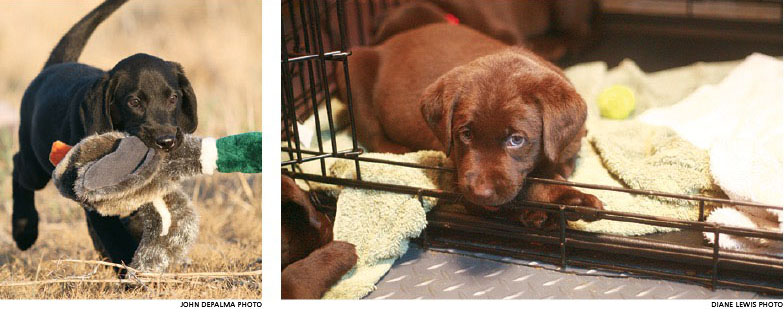 [dropcap]S[/dropcap]avor the individuality that your puppy will soon develop, and be certain to adjust your methods and expectations to the dog you have in front of you right now. While it’s fair to Ginny for me to compare her desire and drive to Josie, who was an exceptional duck dog, it’s not fair when that leads me to make snap judgments about the type of dog she will eventually become. Especially within the framework of the specific training program I used on old Josie.
[dropcap]S[/dropcap]avor the individuality that your puppy will soon develop, and be certain to adjust your methods and expectations to the dog you have in front of you right now. While it’s fair to Ginny for me to compare her desire and drive to Josie, who was an exceptional duck dog, it’s not fair when that leads me to make snap judgments about the type of dog she will eventually become. Especially within the framework of the specific training program I used on old Josie.
Yet that basic puppy foundation – for her behavior, her health, and her training – that all pups have in common, will establish the basis by which we set out on our lifelong journey of discovery of her individuality. It’s something new every day. And it begins when you bring her home.

